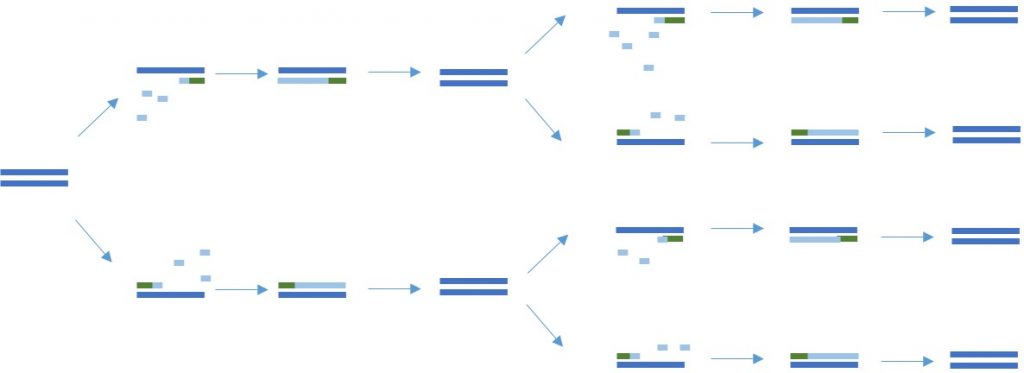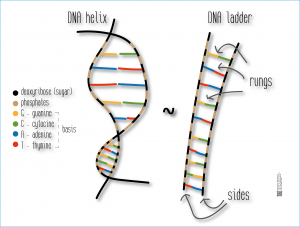PCR
DNA is a very, very small material, and it would be extremely difficult to study it if we only had a single copy to look at.
Luckily, in 1983, the biochemist Kary Mullis discovered a process, by which he was able to multiply specific parts of the DNA helix. During this laboratory work the double stranded DNA is repeatedly heated and cooled in a very specific manner. This causes the the two strands of DNA to separate, so that each base of the original rungs of the ladder now stands alone without its pairing “partner”. This allows us to build an exact copy of a particular part of the DNA. When we have made a large amount of such copies, we can identify and measure patterns of the DNA using specialized devices.
PCR is now used for many different purposes such as the detection of hereditary diseases, parentage testing, detection of pathogenes, and the study of evolution.





 This project (EDU-ARCTIC) has received funding from the European Union’s Horizon 2020 research and innovation programme under grant agreement No 710240. The content of the website is the sole responsibility of the Consortium and it does not represent the opinion of the European Commission, and the Commission is not responsible for any use that might be made of information contained.
This project (EDU-ARCTIC) has received funding from the European Union’s Horizon 2020 research and innovation programme under grant agreement No 710240. The content of the website is the sole responsibility of the Consortium and it does not represent the opinion of the European Commission, and the Commission is not responsible for any use that might be made of information contained.